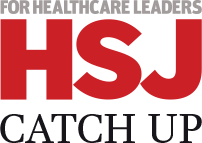Information and insight are of limited value if you cannot drive action and deliver improved outcomes for patients and staff, explains Nicola Mortali

Effective streamlining of hospital processes to address “patient flow” is at the forefront for planners and operational leaders. Flow is traditionally managed in a fragmented manner, with many decisions taken locally in wards, leading to significant variation of practice.
In association with
Moreover, progression often depends on individual preferences, relationships and local leadership.
Information flows between wards and operations can be disjointed and issues are compounded by the complex and convoluted nature of NHS systems, resulting in reactive operational oversight.
Many providers have addressed this issue through team huddles. Created to break down silos, providing a collective understanding of the state of operations.
Although these huddles have made progress they often provide a one-way flow of information, a status update. Typically, general priorities are set and reviewed at the next huddle.
This approach is contrary to the essence of a system that is based on true flow, which is continuous and dynamic.
The ability to present a view of hospital operations over multiple sites is very impressive and the NHS needs to embrace such capabilities as it proceeds with its digitisation strategy
The natural reaction has been to introduce more “command and control”. This has resulted in some hospitals opening rooms full of screens, providing more data and information across the hospital.
While a room full of screens might tell you “Houston, we have a problem”, it does not have the ability to identify the cause of the problem or to detect why an action has not delivered the expected outcomes.
Information and insight are of limited value if you cannot drive action and deliver improved outcomes.
The ability to present a view of hospital operations over multiple sites is very impressive and the NHS needs to embrace such capabilities as it proceeds with its digitisation strategy.
We believe that while technology plays a significant role as a critical enabler, a technology-led approach often downplays the two most important factors regarding flow:
-
NHS is not traditionally a command and control-based system, and;
-
NHS is a system of people, where flow is often a reflection of people and behaviours.
By failing to change ward-level behaviour, you are reduced to the room of screens scenario, with people gathering around to confirm that they still have a problem.
Hybrid approach
Serco, and partners, have worked with NHS organisations on the operational challenges of flow.
We have created a hybrid approach that seeks to achieve a balance between people (and behavioural change), underpinned by operational excellence and service design, and technology, based on data analytics, to deliver long-term operational improvements.
The model is centred on two key concepts, a Care Hub and reshaped, tighter ward operations. The Care Hub is a centralised service with a different ethos to a command centre.
Rather than a command and control model, the Care Hub is an enabler, based on partnership with all stakeholders and aligned to the NHS ethos. Technology is aligned to structure.
Our model focuses on working with wards to establish a constant ward-level “drumbeat” to deliver plans. Based on work with the NHS, our model has three distinct elements:
-
Ongoing Planning – short, medium and longer term;
-
Operational Escalation – plans must adapt, in a coordinated manner;
-
Ongoing Operational Improvement – working with teams to remove variation.
Our approach to technology is based on augmenting process. There are huge opportunities presented by technologies such as IoT and AI, together with the integration of facilities and building management systems with flow.
Our vision is not just to present a view of “bed state” or “task” but to make flow smarter and ultimately self-healing.
Serco has developed a holistic framework for the delivery of flow transformation in the NHS. It is based on extensive operational experience, drawing on our Flow in Resilient Systems Model and is underpinned by deep quantitative and qualitative data.
This model introduces best practice by building high-performing resilient systems. Solutions must be developed collaboratively, with patients and staff at their heart, reflecting local issues, experiences, barriers and constraints, in order to drive sustainable improvements in: patient flow; care quality; care integration; financial stability; safety; and patient and staff experience.
Solution thinking, to drive a culture of partnership, enabling change rather than command and control within the context of the NHS as an organic body of people trying to do their best for patients.
































